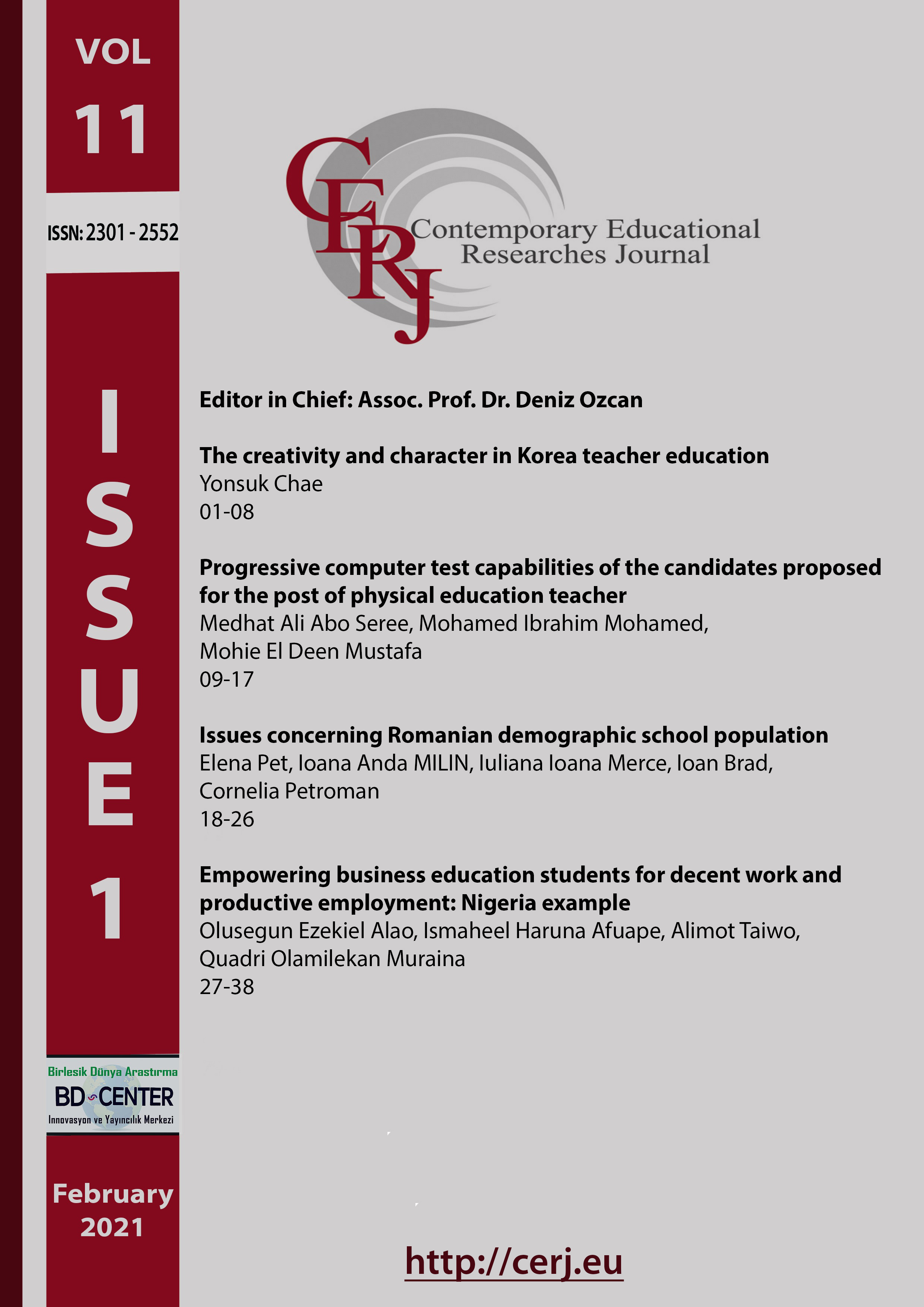Empowering business education students for decent work and productive employment: Nigeria example
Main Article Content
Abstract
The prevailing occurrences of social, economic and environmental challenges have created enormous responsibility for the education sector towards achieving sustainable development goals (SDGs 2030) in developing nations. Therefore, this study was carried out to examine the extent students of business education have been empowered for decent work and productive employment for all through proper awareness and innovative instructional strategies. The study adopts a descriptive survey design and formulated relevant research questions and hypotheses. A sample of 159 final-year students of Business Education at federal and state colleges of education in Lagos, Nigeria, were selected from the population using random, purposive and stratified sampling techniques. The research instrument used was a structured questionnaire. The internal consistency of the research instrument using Cronbach’s alpha correlation coefficient yielded an average index of 0.76. The statistical tools used for analysing the data for research questions and hypotheses are mean and t-test, respectively, at a 0.05 level of significance. The study found that innovative instructional strategies for decent work and productive employment for all were not practically employed. In addition, students lacked proper orientation about the SDGs 2030. Review of curriculum content and the instructional strategies are parts of the recommendations.
Â
Keywords: Business education students, instructional strategies, decent work, productive employment, orientation.
Downloads
Article Details

This work is licensed under a Creative Commons Attribution 4.0 International License.
Authors who publish with this journal agree to the following terms:
- Authors retain copyright and grant the journal right of first publication with the work simultaneously licensed under a Creative Commons Attribution License that allows others to share the work with an acknowledgement of the work's authorship and initial publication in this journal.
- Authors are able to enter into separate, additional contractual arrangements for the non-exclusive distribution of the journal's published version of the work (e.g., post it to an institutional repository or publish it in a book), with an acknowledgement of its initial publication in this journal.
- Authors are permitted and encouraged to post their work online (e.g., in institutional repositories or on their website) prior to and during the submission process, as it can lead to productive exchanges, as well as earlier and greater citation of published work (See The Effect of Open Access).
